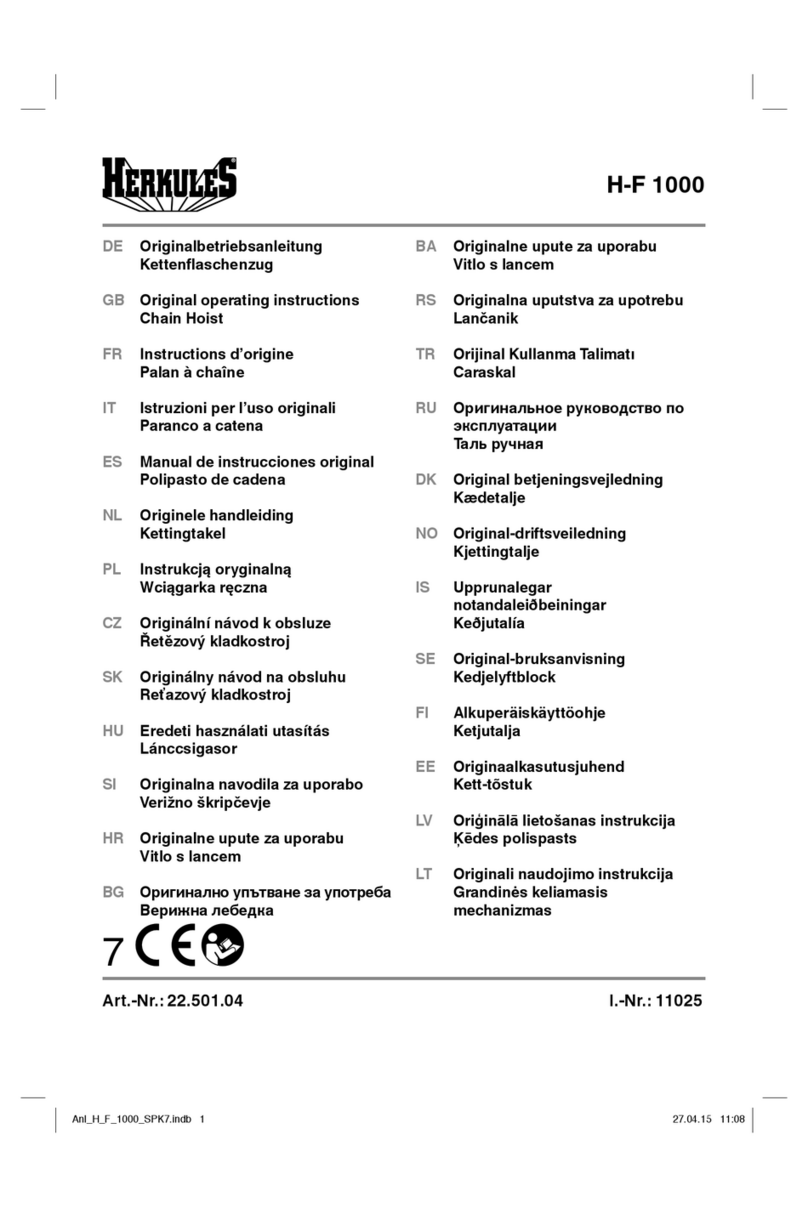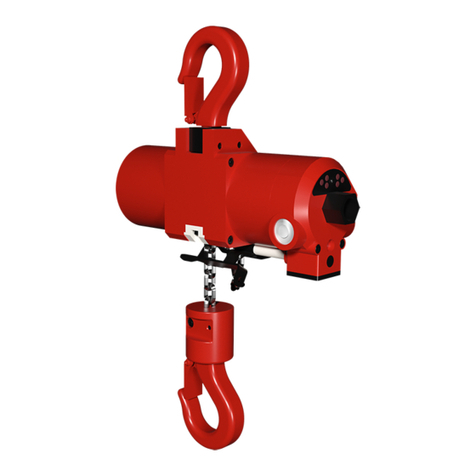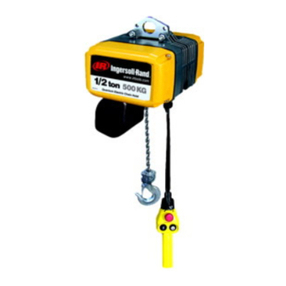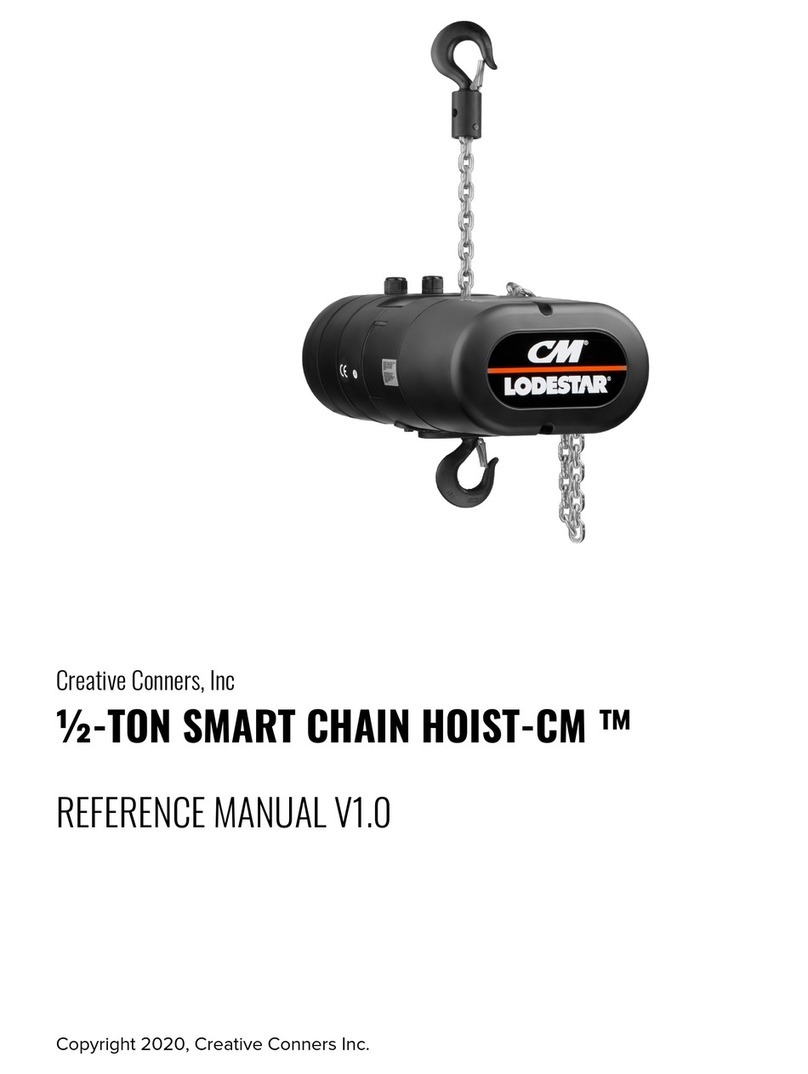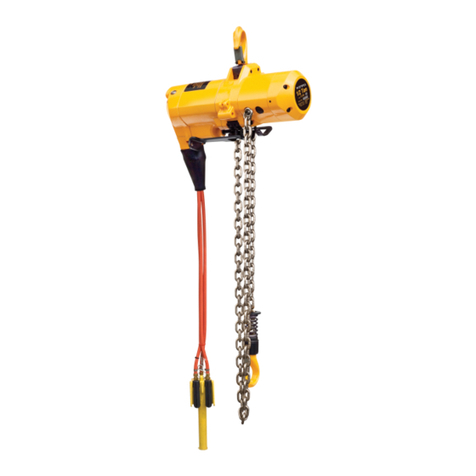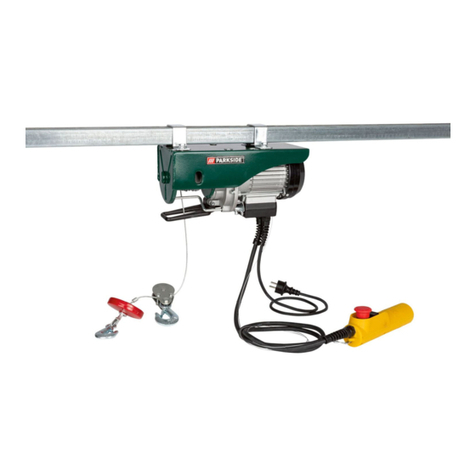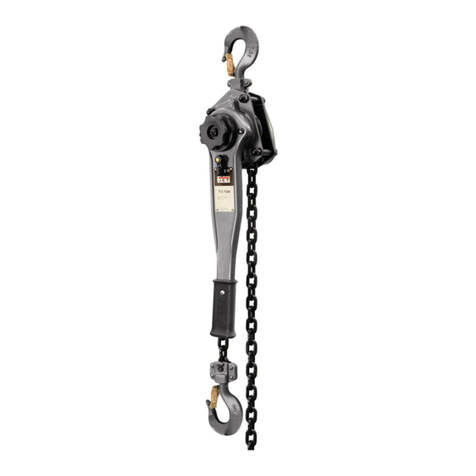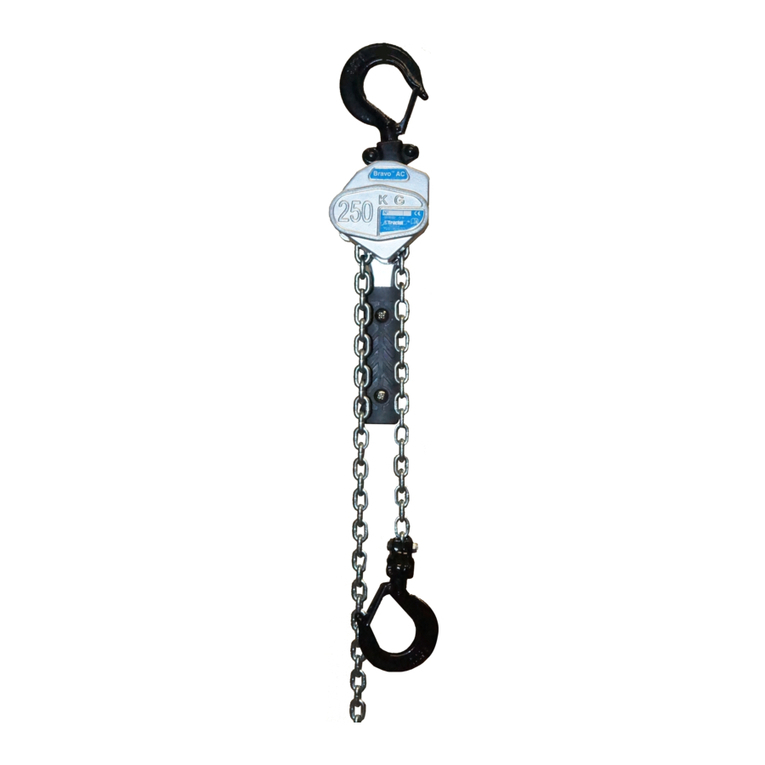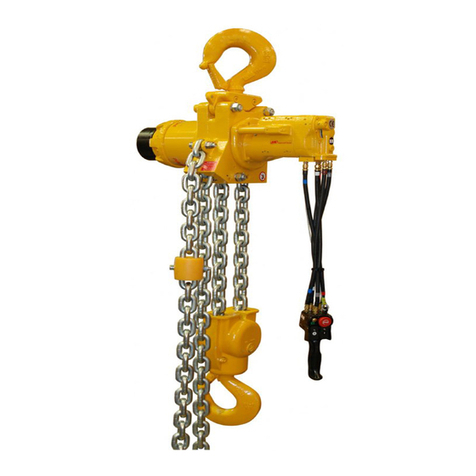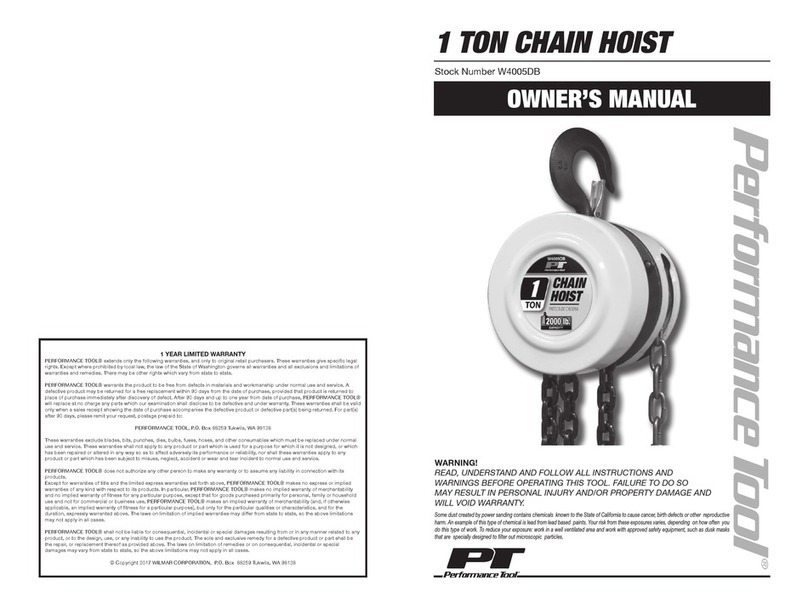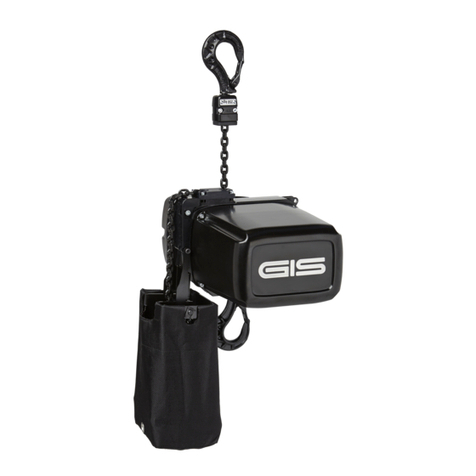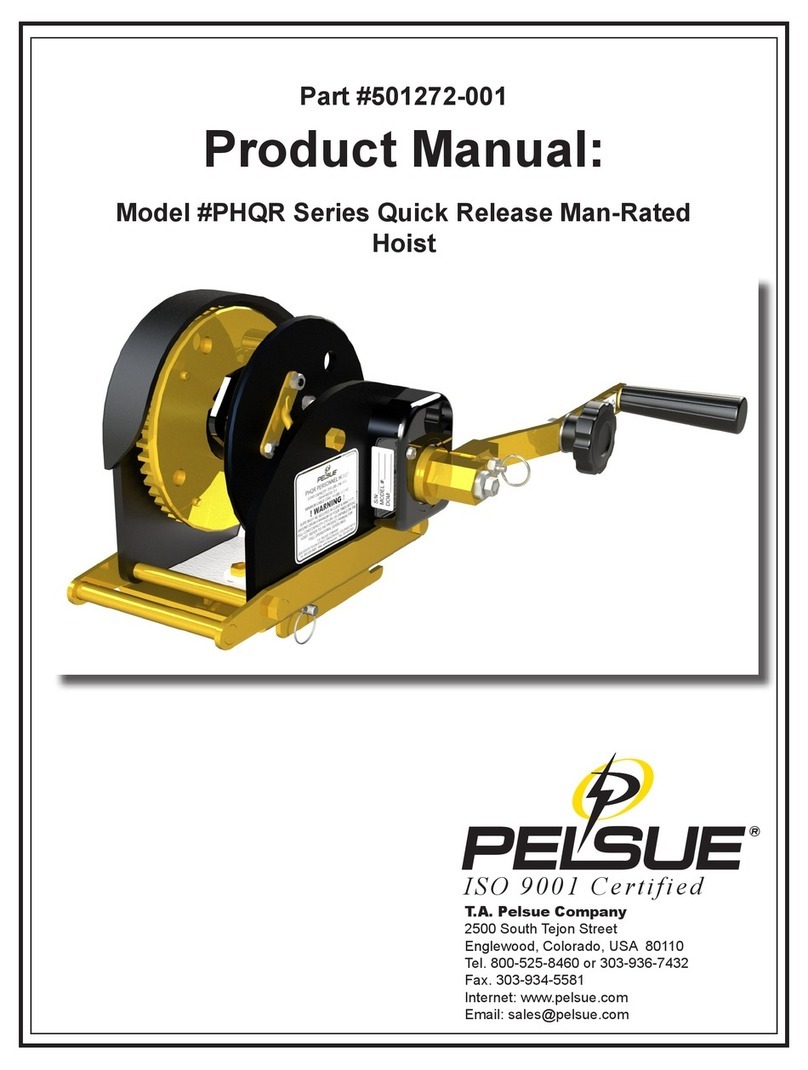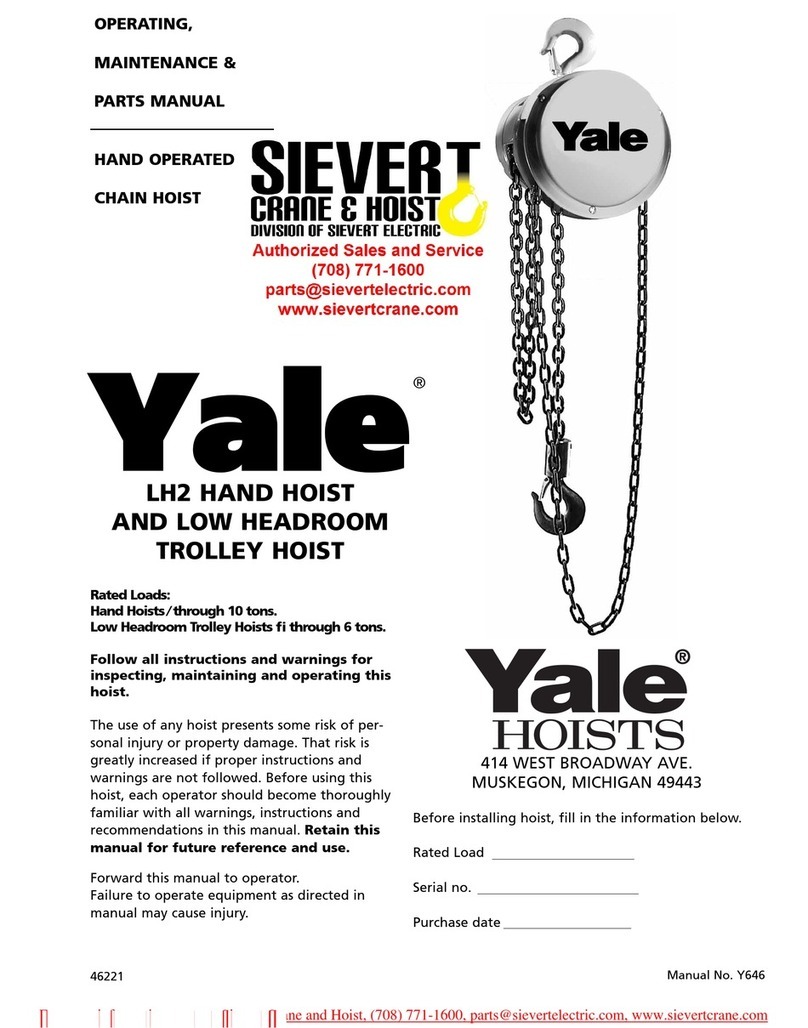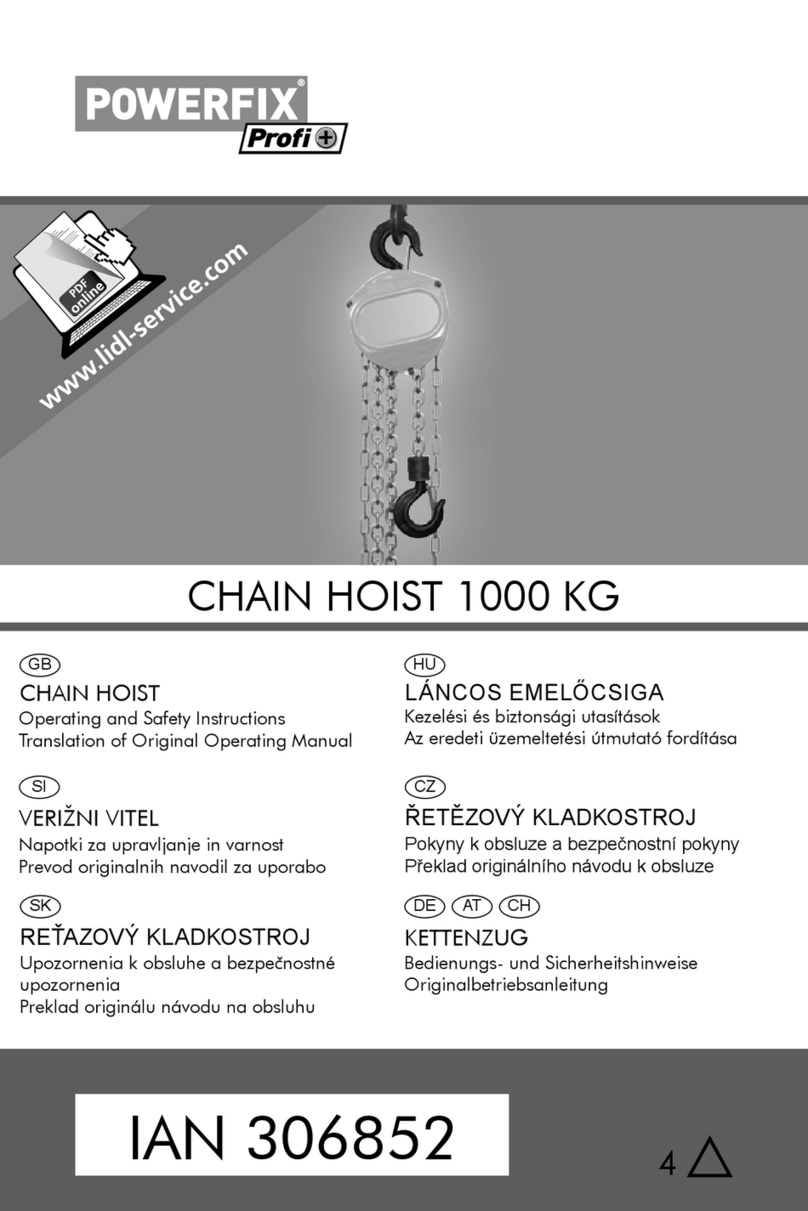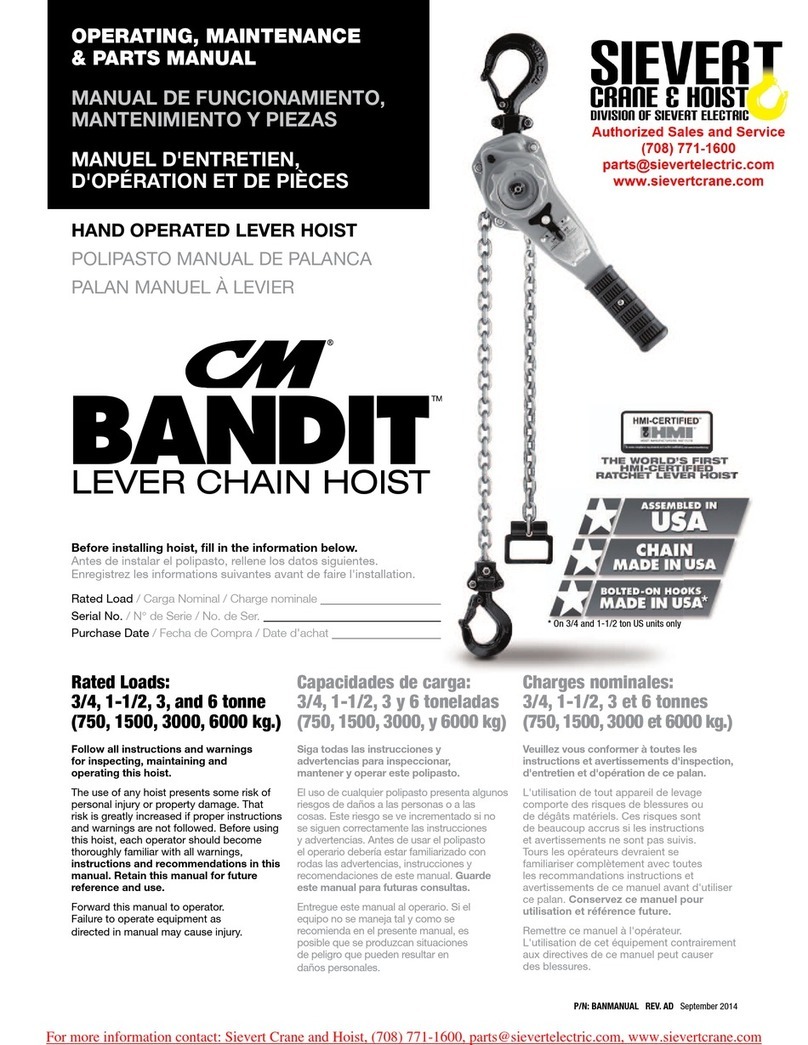
Warning
●Never attempt to lift a load that exceeds the rated capacity.
⋅See the rating plate on the hook block for the rated capacity.
●Do not let anyone ride on or step on the suspended load.
Never use the crane to transport or lift a person.
●Stay away from under a suspended load.
●Do not operate the crane if anyone is in the course of the crane motion.
●Do not move over the load above a person.
●Do not leave the operating position while the load is being suspended.
Do not operate the crane in a manner that the crane always carries a load.
●Always pay attention to the load while operating the crane.
●Do not operate the crane in a manner that the load or the hook block swings or sways.
●Do not use the limit switch for the over-wind prevention device to stop the lifting operation.
●Do not attempt to lift a load with the hoist not right above the load.
⋅Be sure to locate the hoist right above the load before lifting it.
●Do not use the crane to handle a fixed item such as the building structure.
●When lowering a load, do not release the wire rope to the extent that it exceeds the lower limit.
⋅Operate the crane in a manner that the wire rope always remains at least two turns on the drum. Do not operate the crane
if the wire rope is wound on the drum in the opposite direction.
●Do not turn over the suspended load in an unsafe manner.
⋅Use a dedicated turnover device to turn over the suspended load.
●Check the pushbutton for normal action and function before starting to operate the crane. Do not operate the crane if any
of the pushbuttons does not operate normally.
Caution
●Operate the crane only from the rated voltage which the crane is designed for.
●Do not apply braking effort by bragging (or rapid reversing the direction). Do not excessively jog the crane.
●Do not let the suspended load caught on other structure or wiring.
●Do not pull on the switch box cable hard with the cable caught on something.
●Never operate the crane beyond the specified duty factor or the allowable number of startup cycles.
●Do not remove the warning or caution labels affixed to the main body. Do not operate the crane with the warning or
caution labels left illegible.
●Before releasing the operation box from your hand, put it back to the naturally suspended position. Do not have the
operation box hit a person or a thing.
!
●Before operating the crane, check that the lower part of the hook rotates smoothly and freely.
●Be sure to engage the sling ropes and sling devices properly with the hook.
●Stop lifting the load once when the wire rope becomes tight.
●Keep clean the operation box so that dust or sand does not collect around the pushbuttons.
●Before releasing the operation box from your hand, put it back to the naturally suspended position. Do not have the
operation box hit a person or a thing.
●Make sure that the crane has a sufficient lift for the intended work.
●Be sure to turn off the power before leaving the operating position.
4 Maintenance, inspection and modification
Danger
●Do not use any part or device of the crane beyond its service limit.
Warning
●Never modify any part of the crane or its accessories.
●Never use any part or device other than the specified genuine parts or devices.
!
●Be sure to turn off the power before starting maintenance, inspection or repair.
●Only the personnel with the expert knowledge designated by the firm are allowed to maintain, inspect or repair the crane.
●Make sure that the crane is free of a load before starting maintenance, inspection or repair.
●If maintenance or inspection reveals a defect with the crane, do not use the crane until the defects is repaired and rectified.
●Do not use the brake linings beyond its wear limit.
Caution
!
●Before starting maintenance, inspection or repair, be sure to post or hang proper signs saying “Maintenance in progress”
or “NEVER turn on power” for positive indication
●The motors, brake devices and controllers may be very hot. Before starting maintenance, inspection or repair, make sure
such devices are safely cool.
●Adjust the brake device to the normal play.
⋅After reading the instruction manual, keep it at a place available for ready perusal for the personnel
involved in the crane.
⋅Be sure to place an order with us for any inspection that involves disassembling and reassembling the
crane or with our official dealers.
Attention
!
!
!
!
!

